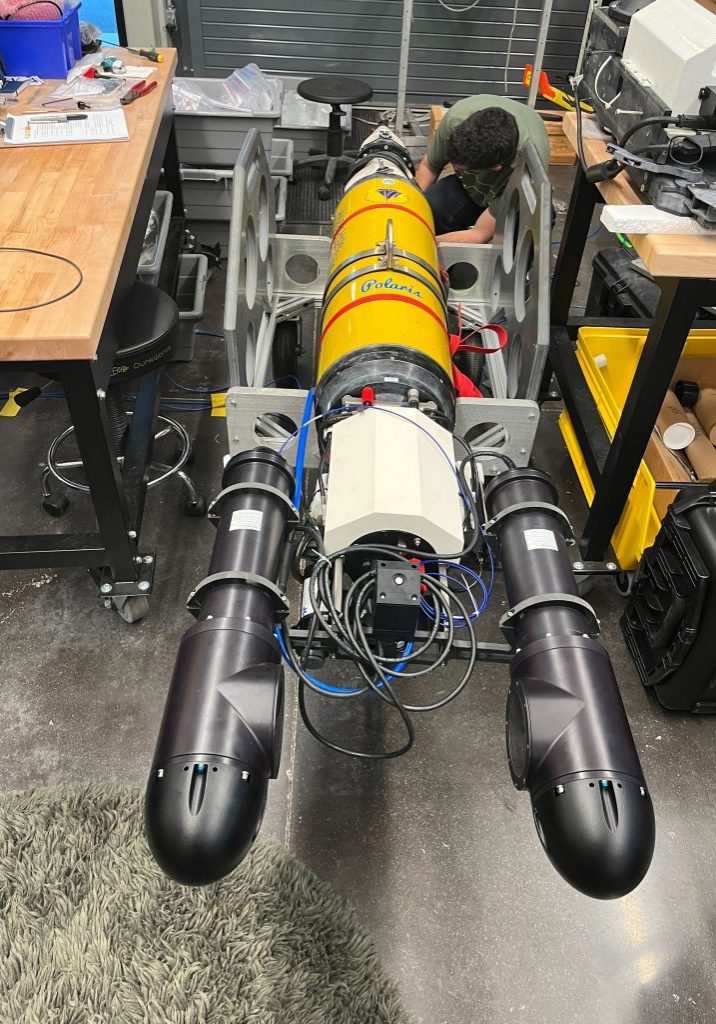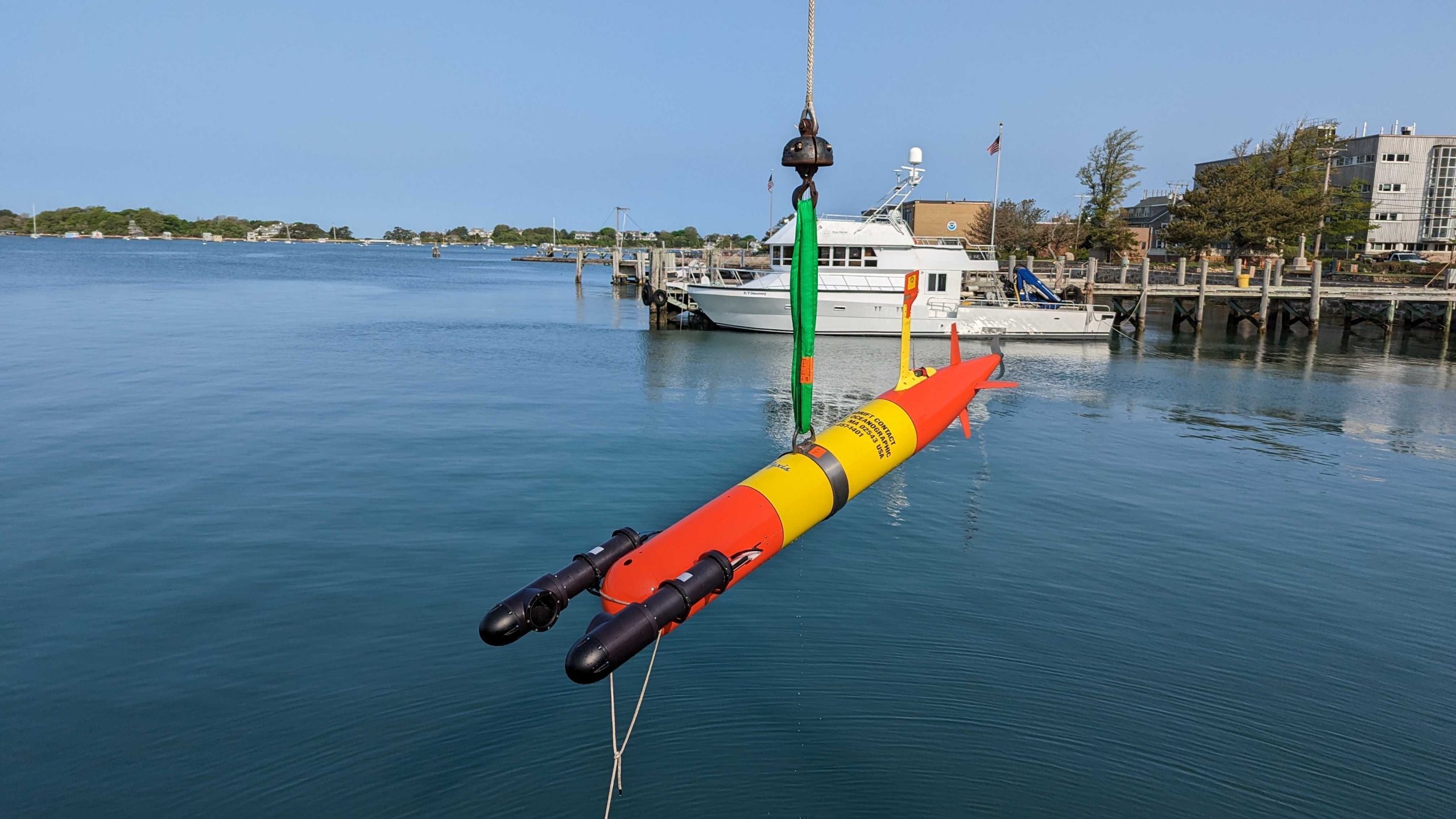Plankton Imager
What's Marine Snow?
Definition: A shower of organic and inorganic material falling from the upper waters to the deep ocean.
- Marine snow is formed by the coagulation many types of smaller particles available in the water. In addition to dead animals and plants, marine snow also includes fecal matter, sand, soot, and other inorganic dust.
- Its name comes from resembling a blizzard of white against a backdrop of dark ocean water. Some flakes fall for weeks before finally reaching the ocean floor, and are primary source of energy for many deep-sea creatures. (NOAA)
Plankton Imager is an emerging technology manufactured by Bellamare for Heidi Sosik studying microbial communities and biogeochemical shifts in the ocean's biological pump. It is capable of autonomously quantifying and sampling key variables of the BP with a shadowgraph camera to collect images which allow for the assessment of plankton community structure and marine snow distributions.
The system takes 14 shadowgraph images of organisms that pass through it each second, producing an immense amount of data on the natural behavior of miniscule creatures in the twilight zone.
What Are Ichthyoplankton?
Definition: eggs and larvae of fish found mainly in the upper 200 meters of the water column; near-surface waters, in which the eggs are passive and drift in the ocean along with the water currents.
- Most fish larvae have almost no swimming ability initially but halfway through their development they are active swimmers. Ichthyoplankton are a relatively small but vital component of total zooplankton. They feed on smaller plankton and are prey themselves for larger animals. (NOAA)


